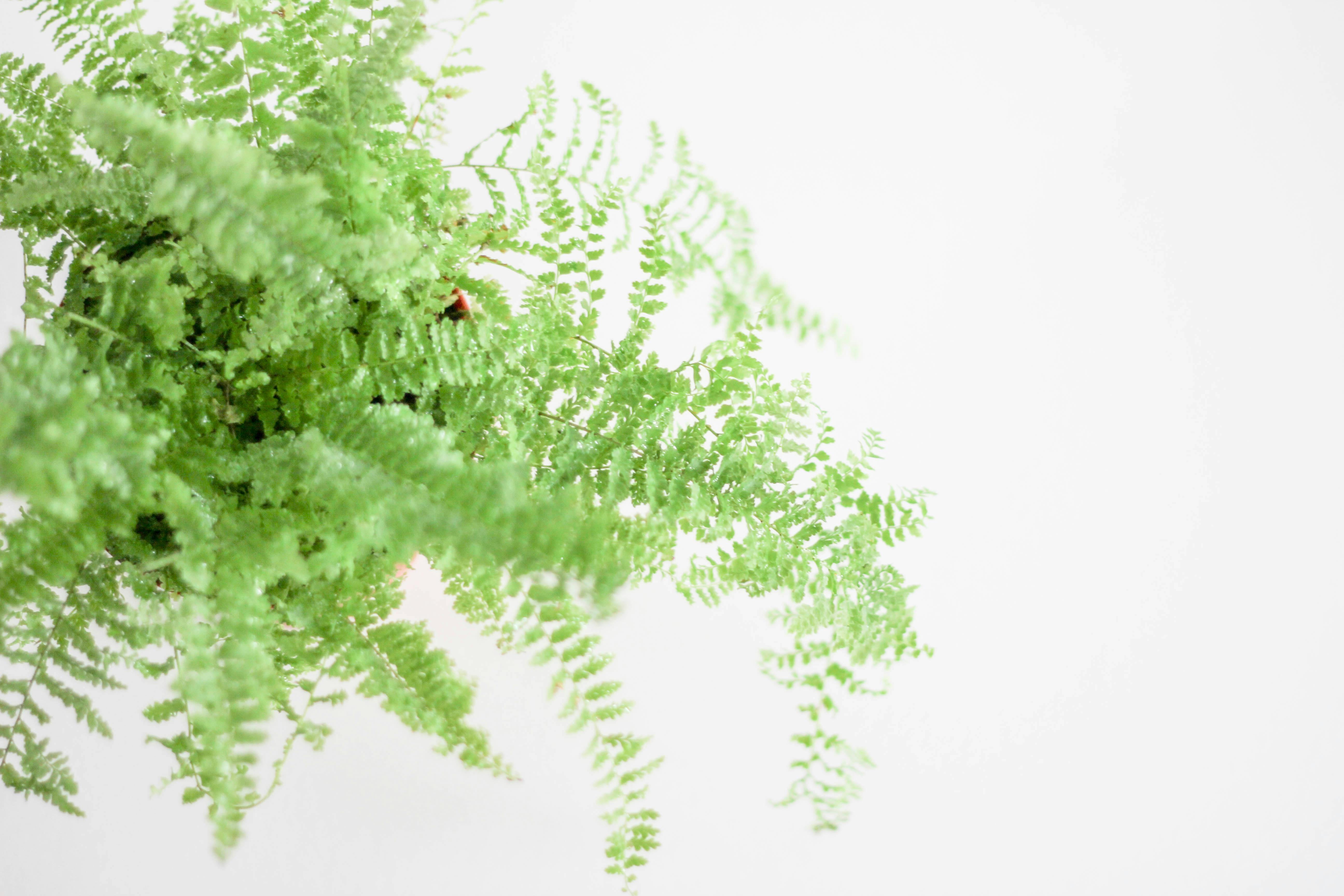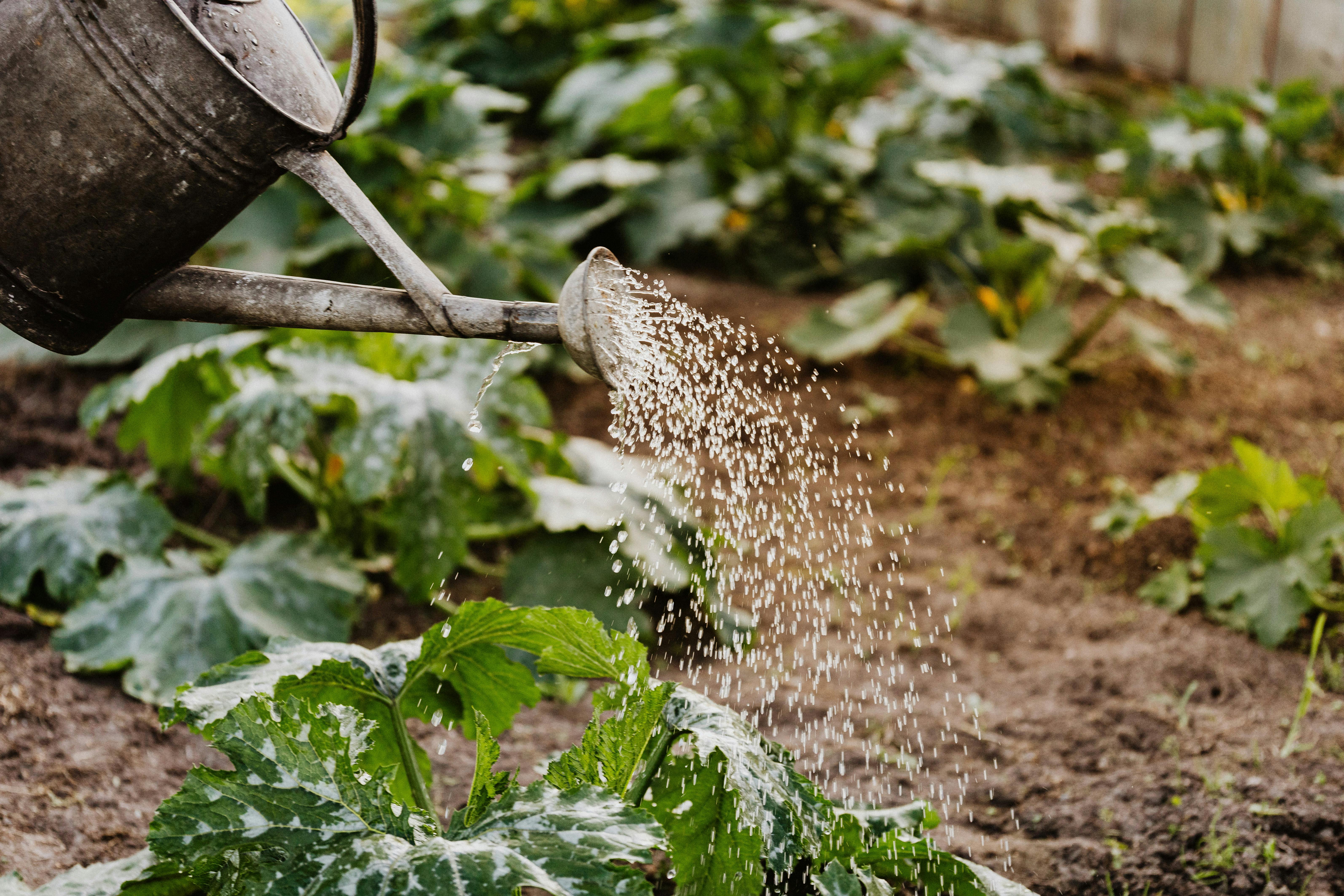Monarch Fern: Growing and Caring Tips

Phymatosorus scolopendria, commonly called monarch fern, musk fern, maile-scented fern, breadfruit fern, or wart fern is a species of fern within the family Polypodiaceae.
The monarch fern is a stunning houseplant known for its delicate, lacy fronds.
Its frilly leaves add natural elegance to any indoor space. With proper care, the monarch fern can thrive for many years, spreading slowly to fill out its space.
This guides provides tips to grow and keep your monarch fern healthy and happy.
Key Features:
Scientific Name: Phymatosorus scolopendria
Common Names: Marsh Fern, Eastern Marsh Fern, Swamp Fern
Color: Dark green fronds with yellow-brown stalks.
Height: 24-36 inches (60-90 cm)
Spread: 18-24 inches (45-60 cm)
Growing Conditions: Partial shade to full shade. Prefers moist, rich soil that does not dry out. Tolerates wet soils.
What is Monarch Fern
The Monarch Fern Plant is a deciduous fern native to eastern and central North America. It forms dense, erect clusters of dark green fronds atop thin, wiry, yellow-brown stalks. This fern thrives in moist woodlands, along streams, and in other damp, shaded areas.
It derives its common name "marsh fern" from its preference for growing at the edges of marshes, swamps, and bogs.The Monarch Fern Plant spreads slowly via rhizomes to form large, lush colonies. It provides ornamental foliage year-round and habitat for birds and small animals. The fronds die back in winter but return in early spring.Usage
The Monarch Fern Plant is commonly used in landscape designs, native plant gardens, and naturalized areas. Its tolerances for shade and moisture make it well-suited for low-light conditions alongside streams, ponds, or shaded backyards. It pairs nicely with hostas, astilbes, and other shade-loving perennials. All plant parts are considered non-toxic.
Reproduction and Spores
Unlike some other ferns, the monarch fern does not produce flowers. Instead, it reproduces through spores, which are located on the undersides of the fronds.
These spores are typically brown or dark in color, providing an interesting contrast against the green foliage.
Versatility and Cultivation
One of the distinguishing features of the monarch fern is its ability to thrive in both indoor and outdoor environments. It is often cultivated as a potted plant, thanks to its adaptability to indoor conditions.
Additionally, it can be grown outdoors in areas with mild climates, where it adds a touch of elegance to gardens, borders, or shaded areas.

Successive steps to Growing Monarch Fern
Propagating a monarch fern can be done in two ways: from spores or from an existing plant.
Follow these step-by-step instructions to propagate a monarch fern successfully, even if you have no prior gardening experience.
- Selecting the Right Spot
- Choose a sunny spot that receives indirect light for at least 6 hours a day.
- Monarch ferns prefer bright areas away from direct sunlight.
- Choosing the Pot
- Select a pot that is 4-6 inches in diameter.
- Terra cotta, plastic, or glazed ceramic pots will all work well.
- Make sure the pot has drainage holes to prevent root rot.
- Preparing the Potting Mix
- Fill the pot 3/4 full with a well-draining potting mix suitable for ferns.
- A recommended mix is 1 part peat moss, 1 part perlite or vermiculite, and 1 part compost or coconut coir.
- This mixture retains moisture while preventing the soil from becoming too wet.
- Propagating from Spores
- Sprinkle fern spores onto the moist soil surface.
- Lightly cover the spores with a thin layer of vermiculite or fine bark.
- Mist the spores daily and keep the soil continuously damp.
- New fronds should start to emerge within 4-8 weeks.
- Propagating from an Existing Plant
- Divide the root ball or take cuttings from the edges of the fronds.
- Place the divisions or cuttings on top of the prepared soil.
- Gently press them about an inch into the soil.
- Watering and Caring for the Plant
- Water the plant gently until water drains freely from the bottom of the pot.
- Continue misting the soil daily to keep it consistently moist as new growth forms.
- After about 4-6 weeks, you should notice new frond growth emerging.
- Once the plant is established, water it when the top inch of soil is dry.
- Keep the plant in its sunny spot with indirect light.
By following these simple steps and providing patience and care, you will successfully propagate your own monarch fern, even if you are new to gardening.
Monarch Fern Care Guides (Indoor and Outdoor)
Soil Guide:
What type of soil does it require? Monarch ferns require soil that drains well while retaining moisture.
Potting soils designed for ferns work best.
Enrich soil with compost or worm castings to boost moisture retention and nutrient levels.
Outdoor plants can be planted directly in soil amended with compost or bark to ensure good drainage.
Go for a neutral pH between 6.0-7.0.
To check pH, use a meter made for soil testing. Insert the probe and check the reading. pH should be in the range of 6.0-7.0.
If pH is below 6 or above 7, you'll need to amend with an organic material like peat moss to lower pH or hardwood ash to raise it.
Mix 1-2 inches of the amendment into the topsoil layer and water thoroughly. Retest in 1-2 weeks.
For container gardens, use pre-bagged soil amendments made for houseplants and follow package instructions for amounts.
Watering Guide:

Monarch ferns like consistently moist soil but should be allowed to partially dry out between waterings.
Use your finger to check the soil moisture - water when the top inch becomes dry. For indoor plants, water once a week. Outdoor ferns may need watering more during hot/dry spells.
I'd recommend using a watering can or shower attachment so you can gently water the entire root zone without disturbing the plant.
For an average sized 6-8" pot, you'll likely need 1-2 cups of room temperature water.
Measure it out using a standard measuring cup so you can consistently water the right amount.
You don't want to overwater, so it's better to err on the side of less water at first.
For indoor ferns, aim to water around once a week. Outdoor ferns may need water every few days when it's hot/sunny.
Adjust your watering amounts accordingly over time for optimal fern care.
Fertilizing Guide:
Enrich outdoor planting beds with compost before planting.
Use a diluted liquid fertilizer monthly during indoor growth periods.
Fish emulsion and all-purpose houseplant formulas both work well. Follow package instructions to prevent burning.
Sunlight Guide:
Provide filtered or dappled light indoors near an east or north-facing window.
Outdoors, partial shade is ideal to prevent scorching. Too much sun can cause yellowing leaves.
Temperature Guide:
Indoor Care:
Temperature Range: Maintain indoor temperatures for Monarch Ferns between 65°F to 75°F (18°C to 24°C) for optimal growth.
Avoid Drafts: Shield ferns from sudden temperature fluctuations and drafts, as they prefer stable conditions.
Humidity Control: Monarch Ferns thrive in high humidity. Aim for levels around 50% or higher. Consider using a humidifier or placing the pot on a tray filled with water and pebbles to enhance moisture.
Avoid Extreme Heat: Protect indoor ferns from excessive heat, keeping them away from radiators or direct sunlight that may cause temperature spikes.
Outdoor Care:
Ideal Outdoor Temperature: Monarch Ferns flourish in outdoor temperatures ranging from 65°F to 80°F (18°C to 27°C).
Partial Shade: Provide partial shade to shield ferns from intense midday sun, especially in hotter climates, to prevent heat stress.
Watch for Frost: If grown outdoors in colder climates (zones 8-11), monitor for frost and take protective measures, such as covering or bringing potted ferns indoors during frost-prone periods.
Winter Protection: In colder zones, add a layer of mulch around the base of outdoor ferns to safeguard them from extreme cold.
Adjusting care based on these temperature considerations ensures a flourishing Monarch Fern, whether it graces your indoor sanctuary or enhances your outdoor garden.
Common Pests and Diseases
Monarch Ferns, known for their lush and vibrant foliage, can face challenges from various pests and diseases. Following are common problems faced by Monarch Fern Plant and Solutions.
Brown Spot:

Identification:
- Symptoms: Brown spots on fern fronds, often with a concentric ring pattern.
- Cause: Fungal infection, typically favored by damp conditions.
Solution:
- Prune Affected Areas: Trim affected fronds to discourage the spread of the fungus.
- Improve Air Circulation: Ensure proper spacing between ferns for better air circulation.
- Water at the Base: Water the soil directly, avoiding overhead watering to minimize fungal growth.
Leaf Rot:
Identification:
- Symptoms: Soft, decaying fronds, often with a foul smell.
- Cause: Excessive moisture, poor drainage, or bacterial infection.
Solution:
- Adjust Watering Practices: Allow the topsoil to dry slightly between watering sessions.
- Enhance Drainage: Ensure well-draining soil to prevent waterlogged conditions.
- Remove Affected Leaves: Promptly cut and discard affected fronds to prevent the spread.
Nutrient Deficiency:
Identification:
- Symptoms: Yellowing fronds, stunted growth, or overall poor vigor.
- Cause: Insufficient essential nutrients like nitrogen, potassium, or iron.
Solution:
- Fertilize Appropriately: Use a balanced, fern-friendly fertilizer to address nutrient gaps.
- Organic Matter: Incorporate well-rotted compost to enhance soil fertility.
- Monitor pH Levels: Ensure the soil pH is suitable for ferns, typically slightly acidic to neutral.
Sap-Sucking Insects:
Identification:
- Common Pests: Aphids, scale insects, and mealybugs.
- Symptoms: Distorted frond growth, sticky residue (honeydew), or the presence of insects.
Solution:
- Natural Predators: Encourage natural predators like ladybugs or lacewings.
- Neem Oil Treatment: Apply neem oil to deter and control sap-sucking insects.
- Regular Inspection: Routinely check the undersides of fronds for early pest detection.
Seasonal Care Tips for Monarch Ferns
Spring:
- Inspect and Clean: Check ferns for winter damage, remove any dead or damaged fronds.
- Fertilize: Apply a balanced, slow-release fertilizer to encourage new growth.
- Watering: Ensure consistent moisture as ferns emerge from dormancy.
- Divide (if needed): Divide overcrowded ferns to maintain vigor and prevent competition for nutrients.
Summer:
- Hydration: Water consistently, especially during dry spells, to maintain soil moisture.
- Shade: Provide partial shade during intense midday sun to prevent heat stress.
- Pruning: Remove spent fronds to encourage new growth and maintain an attractive appearance.
- Pest Control: Monitor for pests and treat promptly if necessary.
Fall:
- Cleanup: Remove fallen leaves and debris to prevent winter harborage for pests.
- Reduce Watering: As temperatures cool, reduce watering frequency but ensure the soil doesn't completely dry out.
- Fertilize (optional): Apply a light, balanced fertilizer if necessary, but avoid stimulating new growth too late in the season.
- Prepare for Frost: If frost is expected, cover ferns or bring potted ferns indoors.
Winter:
- Protection: Mulch around the base of outdoor ferns to protect from extreme cold.
- Indoor Care: If growing ferns indoors, maintain consistent humidity levels and provide bright, indirect light.
- Monitor Moisture: Check soil moisture periodically; do not let it dry out completely.
- Prune (if needed): Trim any dead or damaged fronds but avoid heavy pruning during winter.
Toxicity
The Monarch Fern (Phymatosorus scolopendria) is a non-toxic plant, making it a worry-free choice for households with children and pets. It is considered safe to have around, providing peace of mind for families.
This fern does not contain any known toxins or harmful substances, ensuring the well-being of both humans and animals. Whether you choose to display it indoors or outdoors, the Monarch Fern's non-toxic nature adds to its appeal as an ornamental plant.
With the Monarch Fern, you can enjoy its beauty without any concerns about toxicity. It is a safe and delightful addition to any home or garden.
Conclusion
The monarch fern makes a stunning indoor or outdoor addition with its graceful fronds and striking appearance. With the right care including moist well-draining soil, indirect sunlight, and occasional fertilizer, this fern thrives for many years, filling spaces with its lush greenery.
By following the proven tips covered here, from propagation to care guidelines, you can experience the elegant beauty and versatile charm of this toxic-free plant. Whether starting a new monarch fern from spores or nurturing an existing plant, apply these expert methods to enjoy the monarch's natural elegance for seasons to come.
FAQ
Q. What is the Best Time for Planting Monarch Fern?
A. The ideal time for growing monarch ferns depends on whether you are planting them outdoors or keeping them as houseplants
Late winter/early spring (February-April) is generally the best time to plant ferns outdoors as the soil is still relatively cool.
This gives the new plants a head start on the growing season.
Fall planting (September-October) is also suitable in warmer climates as the ferns have time to establish roots before winter.
Avoid very hot/dry summer months, as young ferns need consistent moisture to settle in.
Spring (March-May) is an excellent time, as natural sunlight increases and temperatures warm indoors. This mimics the fern's native tropical environment.
Summer (June-August) works too, but be aware ferns may need more frequent watering in the heat without rainfall.
Fall/winter (September-February) is possible but growth will slow withoutthe long sunny days of spring/summer. Stick with actively growing ferns.
For Outdoor Planting (zones 8-11):
For Indoor Houseplants:
Q: Can monarch ferns be grown outdoors year-round in my garden?
A: In colder zones, protect outdoor ferns or move pots to a sheltered spot over winter.
Q: The new growth on my fern is yellow. What's wrong?
A: Yellow fronds usually mean the plant is not getting enough light or nutrients. Adjust care as needed.
